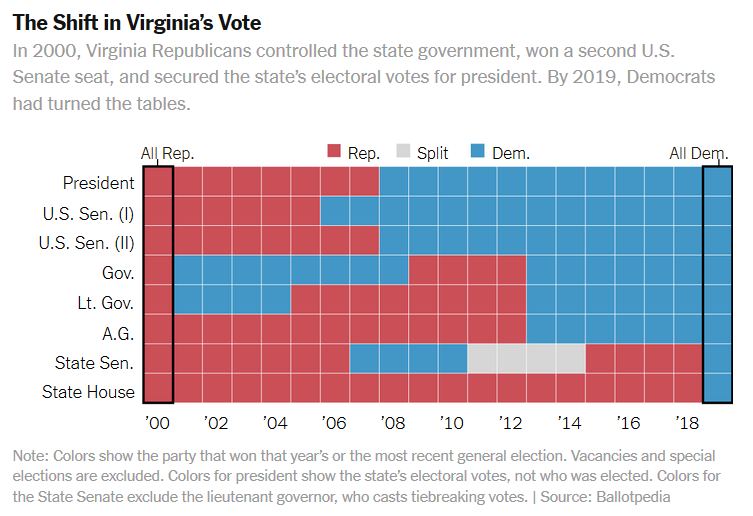In Defying the Odds, we discuss state and congressional elections as well as the presidential race.
Arizona and Texas, once part of the GOP base, are competitive this year.
At Politico, Sabrina Rodriguez reports on Arizona:
Arizona’s state races haven’t gotten so much attention given the millions of dollars being pumped into the presidential matchup and expensive race between appointed Republican Sen. Martha McSally and Kelly, which could help tip the Senate over to Democrats. But it’s the possibility of flipping that state legislature that has many Republicans thinking about the long-term effects of Trump’s GOP.
“The Republican Party needs to understand that there’s a large number of us voting Democrat all down the ballot because of Trump, and they need to realize that their choice to blindly follow him will impact the state politics,” said Daniel Barker, a former Arizona Court of Appeals Judge who started Arizona Republicans Who Believe In Treating Others With Respect, a PAC that’s supporting Biden.
“We need to change direction,” he added.
The November election will provide the first indication of whether Arizona is becoming Democratic-leaning territory, like Colorado and Virginia — or a perennial swing state, like Florida. The state’s growing Latino population and shifting attitudes among college-educated white voters across the state have been a boon to Democrats. Almost a third of the state is Latino — and while only about half of them are expected to vote, they are likely to break heavily for Democrats: Sen. Kyrsten Sinema secured 70 percent Latino support in her 2018 run.
Matt Levin at CalMatters:
“Where things look really different in Texas politics right now are in these districts that have seen rapid population growth, and Californians have been a part of that growth,” said Jim Henson, director of the Texas Politics Project at the University of Texas at Austin.
...
While the prospect of Texas as a swing state may shock those who associate the state with George W. Bush, it shouldn’t surprise anyone paying attention to its politics over the last decade. While Barack Obama lost Texas by 16 points in his 2012 re-election bid, in 2016 Hillary Clinton closed that gap to single-digits. Two years later, Democrat Beto O’Rourke lost to incumbent Republican Senator Ted Cruz by less than three points.
The improving performance of Texas Democrats tracks well with the exodus of Californians into Sun Belt states over the past two decades. Since 2008, more than 700,000 Californians have moved to Texas, at first propelled by the Great Recession and later by their home state’s increasingly untenable cost of living. ...
Henson warns it’s seductively reductionist to attribute Texas’ rapid statewide purpling simply to California expats. When you factor in the number of Texans that have moved to California over the last decade, the net political effect on a state with 29 million people is less progressive tidal wave and more trickling blue-ish tributary. With a rising Latino population and growing metropolitan areas, Texas’ internal demographic shifts have combined with out-of-state immigration (not just from California) to alter its politics.
It’s also a mistake to think everyone from California moving to Texas drove there in a Prius adorned with a “Billionaires can’t buy Bernie” bumper sticker. While precise polling on ex-Californians’ political persuasions is hard to find, loads of anecdotal evidence suggest a decent chunk of Golden State emigres are fleeing the state precisely because of its progressive culture.
But the parts of Texas where Californians are most likely to move — the sprawling suburbs of Houston, Dallas and Fort Worth — are now politically competitive in a way that was unfathomable 20 years ago. Even if progressive Californians aren’t numerous enough to push Texas away from Trump, they can still tilt congressional and state legislative races. In many places, they already have.
“Those areas, particularly the suburban and exurban areas outside of Texas metros, have become ground zero for a much more competitive Texas in which the Republican hegemony that has been so uniform here for the last twenty years has come under siege,” said Henson.
Patrick Svitek at The Texas Tribune:
All but one of the 10 Democrats running to flip nationally targeted U.S. House seats in Texas raised more than their Republican opponents over the past three months, according to the latest campaign finance reports.
In six of those nine races, the Republican ended the quarter with more cash on hand, a financial advantage heading into the last full month before Election Day. But the Democratic fundraising shows serious momentum as the national party reaches the finale of its drive to make Texas the top congressional battleground nationwide this November.
Republicans also had a bright spot in one of the two seats they are trying to win back, that of Democratic Rep. Lizzie Pannill Fletcher of Houston. Her GOP challenger, Wesley Hunt, soundly outraised her. She ended the quarter with a small cash-on-hand advantage.



